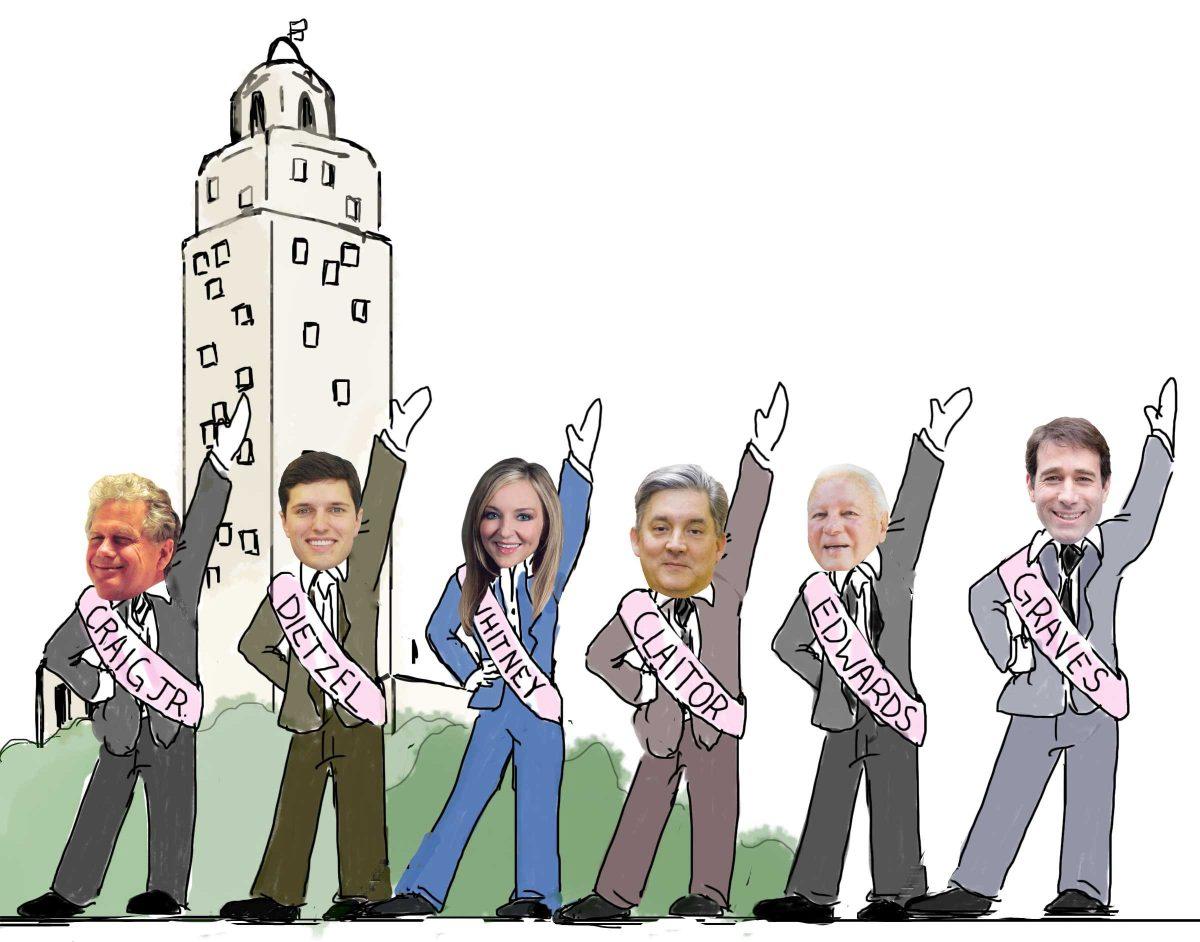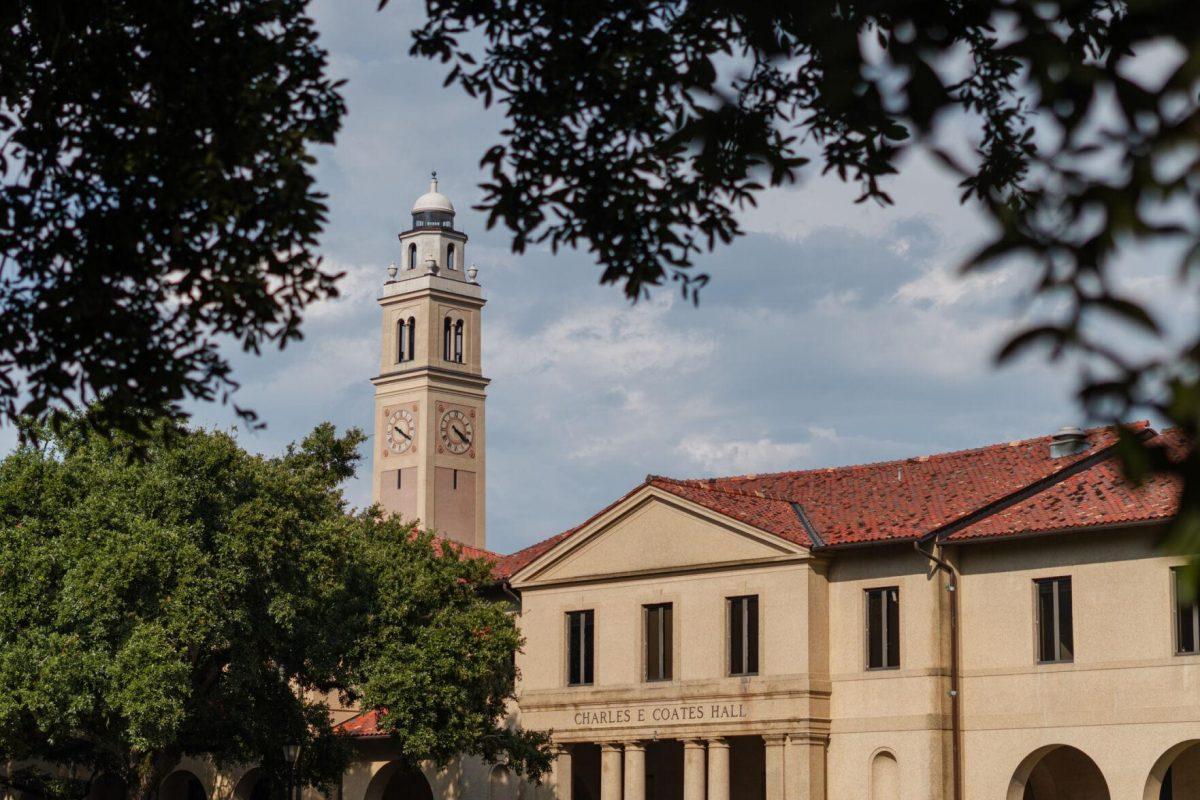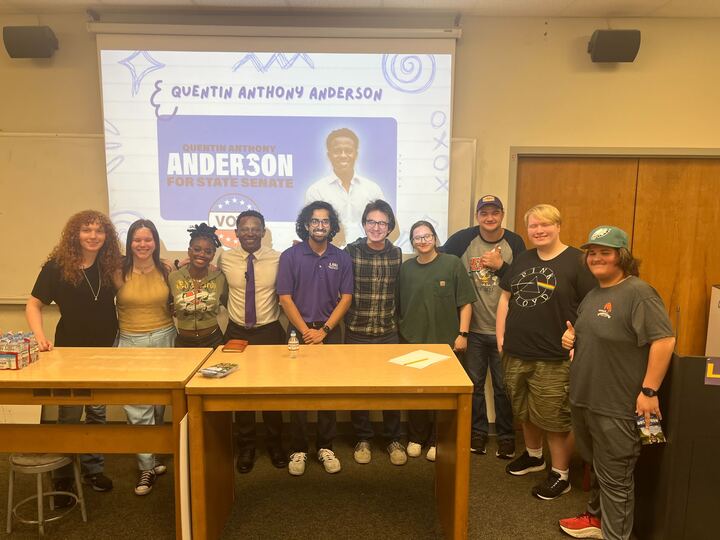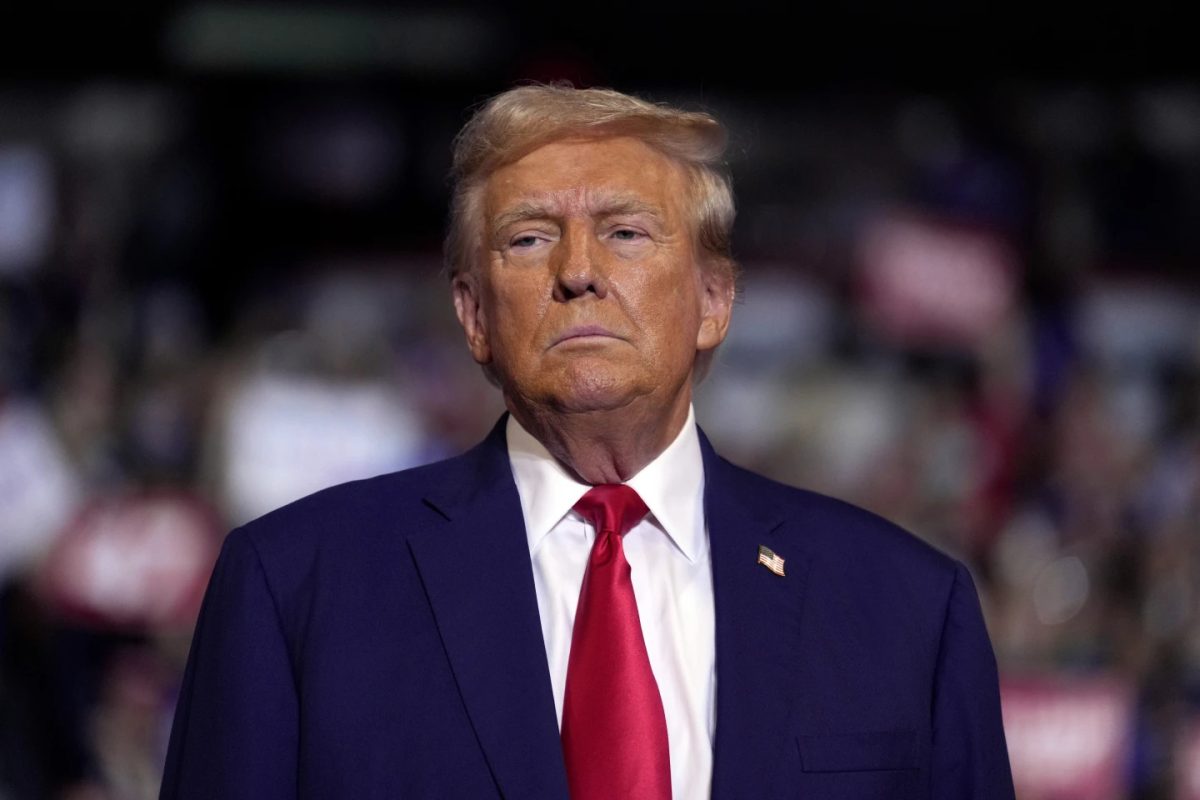There are 13 candidates in Louisiana’s 6th Congressional District with specific issues of focus, but some voters might pay more attention to the looks of the candidates than their stances.
Assistant professor of political communication Kathleen Searles said since the dawn of man, people have determined whether someone is a threat based on looks, and physical
attractiveness has played a key role in human survival.
“People have always made quick decisions about whether or not somebody is credible or a good person based on how they look,” Searles said. “That carries through today in politics.”
Searles said this reaction became more pronounced with political campaigns’ use of television.
When the first televised debate aired on Sept. 26, 1960, between then-presidential candidates John F. Kennedy and Richard Nixon, it was broadcast on every channel.
Searles said this was a time when most households in the U.S. had a television.
“For the first one ever, we have a very beautiful JFK,” Searles said. “He looks great — very tan and handsome, and we have Nixon, who has a beard and looks sick.”
Nixon appeared ill, dangerous and mad, Searles said, and this was the first facial appearance of a candidate that influenced America.
Although this debate may have changed the mind of some voters, Searles said political scientists predict 98 percent of votes are based on party affiliation.
Even if a person does not identify with a party, Searles said, voters tend to lean one way because of how their parents voted or a voter’s affinity for one party.
She said a candidate’s looks influence the remaining 2 percent of the vote, and voters will determine whether a person looks trustworthy, credible or competent.
Sports administration sophomore Mary Maher said she thinks more people listen to what a candidate has to offer instead of paying attention to a candidate’s looks.
“For the most part, people are going to decide based on party,” Searles said. “Only in the absence of knowledge would they do looks alone.”
Searles said if there are multiple candidates from the same party running for a position, a voter will be more likely to take looks into account.
“There may be one that you feel like in your gut is the better choice and that may be in part informed by how that person looks,” Searles said.
She said looks may influence a voter’s decision more in a low-information election, like school board elections, city elections or Student Government elections.
When there are not partisan cues, Searles said, voters are more likely to choose the more attractive candidate.
Mass communication sophomore Katie Bourque said University students are more likely to vote for SG candidates based on looks.
“I think that if a team who is running looks like a power couple, then they’re going to be the power couple of Student Government,” Bourque said.
Chemical engineering freshman Joshua Cobar agreed with Bourque.
“Student Government is more of a popularity thing, not necessarily about what you’re running for,” Cobar said.
Searles said looks play a smaller role in midterm elections because those who vote are more likely to be partisan, and these voters are probably more politically involved.
A Stanford University study, “Facial Similarity between Voters and Candidates Causes Social Influence,” shows voters are more likely to elect people that share similar facial features.
“In general, people select candidates that look competent and a lot of that judgment of competence comes from whether or not that person looks like you,” Searles said.
Social scientists took an image of the surveyor’s face and morphed it with a political candidate’s face. The two faces shared similar features, but the surveyor’s image was unrecognizable.
The surveyor was more likely to select the candidate that looked more like himself or herself, according to the Standford study.
Searles said voters are more likely to vote for someone of their same race, and she said people are more likely to vote for men overall, but women are more likely to vote for other female candidates.
Searles said social media makes it easier for potential voters to identify how a candidate looks, but social media is risky.
“It does make it a lot easier to get an idea of what people look like in all types of different instances — professional or not,” Searles said.
Candidate attractiveness may influence voters
September 16, 2014
A study from Stanford University shows voters may vote based on looks in non-partisan elections.
More to Discover










